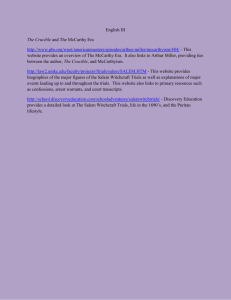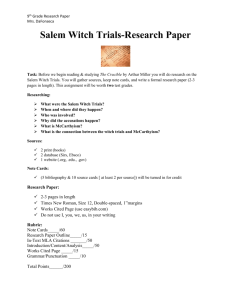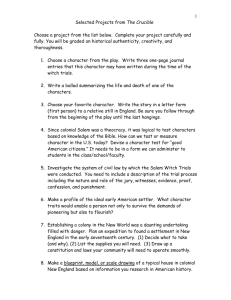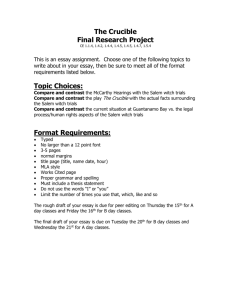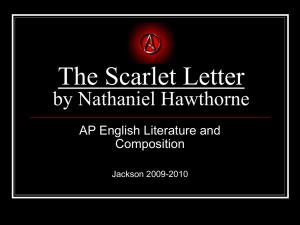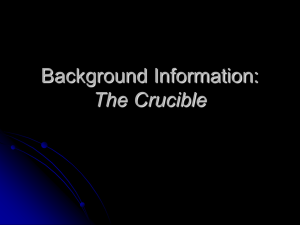Name
advertisement
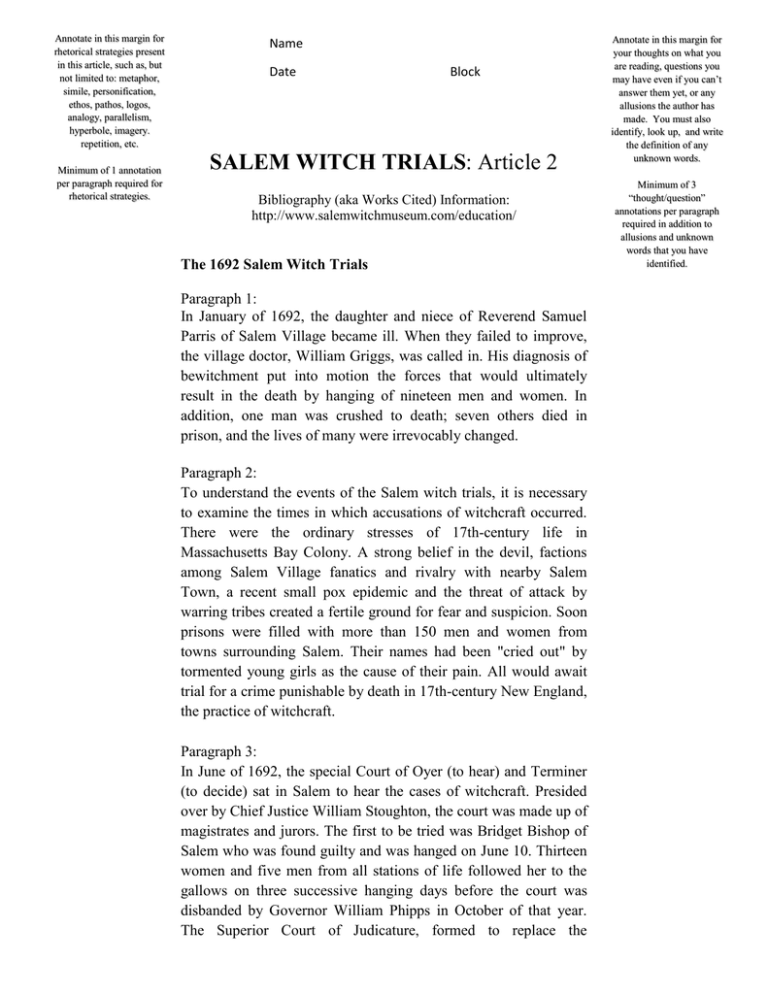
Annotate in this margin for rhetorical strategies present in this article, such as, but not limited to: metaphor, simile, personification, ethos, pathos, logos, analogy, parallelism, hyperbole, imagery. repetition, etc. Minimum of 1 annotation per paragraph required for rhetorical strategies. Name Date Block SALEM WITCH TRIALS: Article 2 Bibliography (aka Works Cited) Information: http://www.salemwitchmuseum.com/education/ The 1692 Salem Witch Trials Paragraph 1: In January of 1692, the daughter and niece of Reverend Samuel Parris of Salem Village became ill. When they failed to improve, the village doctor, William Griggs, was called in. His diagnosis of bewitchment put into motion the forces that would ultimately result in the death by hanging of nineteen men and women. In addition, one man was crushed to death; seven others died in prison, and the lives of many were irrevocably changed. Paragraph 2: To understand the events of the Salem witch trials, it is necessary to examine the times in which accusations of witchcraft occurred. There were the ordinary stresses of 17th-century life in Massachusetts Bay Colony. A strong belief in the devil, factions among Salem Village fanatics and rivalry with nearby Salem Town, a recent small pox epidemic and the threat of attack by warring tribes created a fertile ground for fear and suspicion. Soon prisons were filled with more than 150 men and women from towns surrounding Salem. Their names had been "cried out" by tormented young girls as the cause of their pain. All would await trial for a crime punishable by death in 17th-century New England, the practice of witchcraft. Paragraph 3: In June of 1692, the special Court of Oyer (to hear) and Terminer (to decide) sat in Salem to hear the cases of witchcraft. Presided over by Chief Justice William Stoughton, the court was made up of magistrates and jurors. The first to be tried was Bridget Bishop of Salem who was found guilty and was hanged on June 10. Thirteen women and five men from all stations of life followed her to the gallows on three successive hanging days before the court was disbanded by Governor William Phipps in October of that year. The Superior Court of Judicature, formed to replace the Annotate in this margin for your thoughts on what you are reading, questions you may have even if you can’t answer them yet, or any allusions the author has made. You must also identify, look up, and write the definition of any unknown words. Minimum of 3 “thought/question” annotations per paragraph required in addition to allusions and unknown words that you have identified. "witchcraft" court, did not allow spectral evidence. This belief in the power of the accused to use their invisible shapes or spectres to torture their victims had sealed the fates of those tried by the Court of Oyer and Terminer. The new court released those awaiting trial and pardoned those awaiting execution. In effect, the Salem witch trials were over. Paragraph 4: As years passed, apologies were offered, and restitution was made to the victims' families. Historians and sociologists have examined this most complex episode in our history so that we may understand the issues of that time and apply our understanding to our own society. The parallels between the Salem witch trials and more modern examples of "witch hunting" like the McCarthy hearings of the 1950's, are remarkable.

